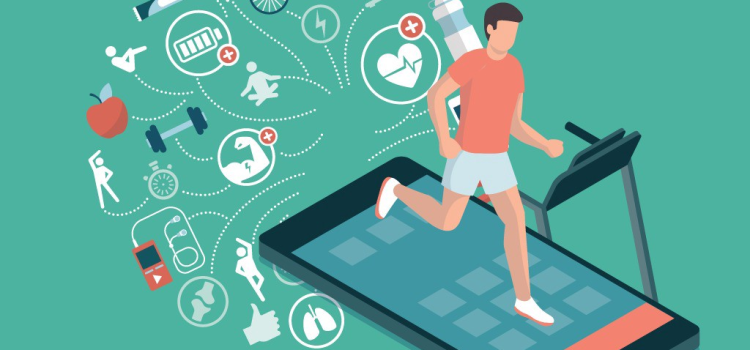
In an era where technology permeates nearly every aspect of our lives, it is no surprise that fitness has also embraced the digital revolution. Fitness apps are now ubiquitous, transforming the way we exercise and approach our health and wellness goals. These digital tools, accessible via smartphones and wearable devices, are reshaping the fitness landscape by offering personalized, on-demand, and data-driven solutions to users worldwide.
The Rise of Fitness Apps
Fitness apps have seen a meteoric rise in popularity over the last decade. According to a report by Grand View Research, the global fitness app market size was valued at USD 4.4 billion in 2020 and is expected to grow at a compound annual growth rate (CAGR) of 21.6% from 2021 to 2028. This surge can be attributed to several factors, including the increasing penetration of smartphones, the growing awareness of health and fitness, and the convenience that these apps offer.
Personalization and Customization
One of the most significant advantages of fitness apps is their ability to provide personalized workout plans and nutritional advice. Unlike traditional fitness routines, which often follow a one-size-fits-all approach, fitness apps use algorithms and user data to tailor programs to individual needs. By inputting personal information such as age, weight, fitness level, and goals, users can receive customized workout plans that adjust as they progress.
For instance, apps like MyFitnessPal and Fitbit not only track physical activity but also monitor dietary intake, offering insights into calorie consumption and nutritional balance. This level of personalization ensures that users are more likely to stick to their fitness regimes and achieve their goals.
Accessibility and Convenience
Fitness apps have made exercising more accessible than ever before. Gone are the days when one had to join a gym or hire a personal trainer to get a structured workout. With fitness apps, users can access a wide variety of workouts, from yoga and pilates to high-intensity interval training (HIIT) and strength training, right from their living rooms.
Apps like Nike Training Club and Peloton offer on-demand workout videos led by professional trainers, making it easy for users to fit exercise into their busy schedules. This convenience is particularly beneficial for individuals who travel frequently or have irregular work hours, as it eliminates the need for a fixed location or time for workouts.
Data-Driven Insights
The integration of wearable technology with fitness apps has ushered in a new era of data-driven fitness. Devices like smartwatches and fitness trackers collect a wealth of data, including heart rate, steps taken, calories burned, and sleep patterns. Fitness apps then analyze this data to provide users with actionable insights.
For example, Garmin Connect and Apple Health not only track your physical activities but also offer in-depth analyses of your performance, recovery, and overall health. These insights help users understand their progress, identify areas for improvement, and make informed decisions about their fitness routines.

Social Connectivity and Motivation
Staying motivated is one of the biggest challenges in maintaining a regular exercise routine. Fitness apps address this issue by incorporating social features that allow users to connect with friends, join challenges, and share their achievements. This sense of community and competition can be a powerful motivator.
Apps like Strava and Zwift have built robust social networks where users can follow each other’s activities, give kudos, and participate in virtual races. These social elements not only make exercising more enjoyable but also foster a sense of accountability, encouraging users to stay consistent with their workouts.
Gamification of Fitness
Gamification is another innovative feature that fitness apps are leveraging to enhance user engagement. By incorporating game-like elements such as points, badges, and leaderboards, fitness apps make exercising more fun and rewarding.
Apps like Zombies, Run! turn running into an immersive game where users have to outrun zombies and complete missions. Similarly, apps like Fitocracy use a points system to reward users for completing workouts and achieving milestones. This gamification not only makes exercising more enjoyable but also helps users set and achieve incremental goals, keeping them motivated in the long run.
Cost-Effectiveness
Traditional gym memberships and personal training sessions can be expensive, making them inaccessible to many people. Fitness apps, on the other hand, offer a cost-effective alternative. While some apps require a subscription fee, many offer free versions with a wide range of features. This affordability makes fitness more accessible to a broader audience, democratizing the pursuit of health and wellness.
Challenges and Considerations
While fitness apps offer numerous benefits, they are not without their challenges. One of the main concerns is the accuracy of the data collected. While wearable devices and fitness apps have improved significantly, they are not infallible and can sometimes provide inaccurate readings. Users should be aware of these limitations and use the data as a guideline rather than an absolute measure.
Another consideration is the potential for information overload. With the vast amount of data available, users can sometimes feel overwhelmed and unsure of how to interpret the information. Fitness apps must strike a balance between providing valuable insights and not overwhelming users with too much data.
The Future of Fitness Apps
The future of fitness apps looks promising, with advancements in artificial intelligence, machine learning, and biometric technology set to further enhance their capabilities. We can expect even more sophisticated personalization, with apps that can adapt in real-time to a user’s changing fitness levels and goals. Additionally, the integration of augmented reality (AR) and virtual reality (VR) could offer immersive workout experiences that make exercising even more engaging and effective.
Conclusion
Fitness apps are undoubtedly changing the way we exercise, offering personalized, convenient, and data-driven solutions that cater to individual needs. By making fitness more accessible and enjoyable, these apps are helping people lead healthier lives. As technology continues to evolve, we can expect fitness apps to become even more integral to our exercise routines, revolutionizing the way we approach health and wellness.










